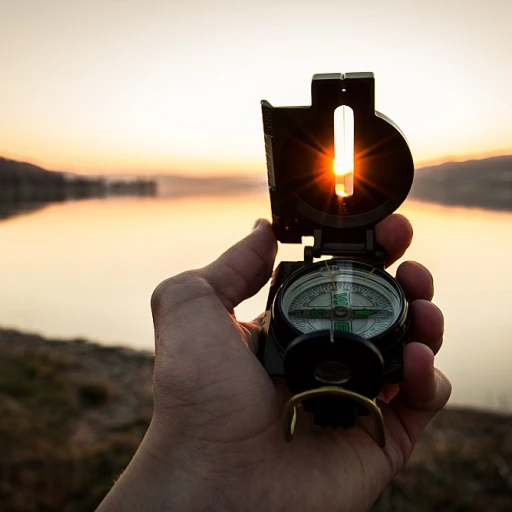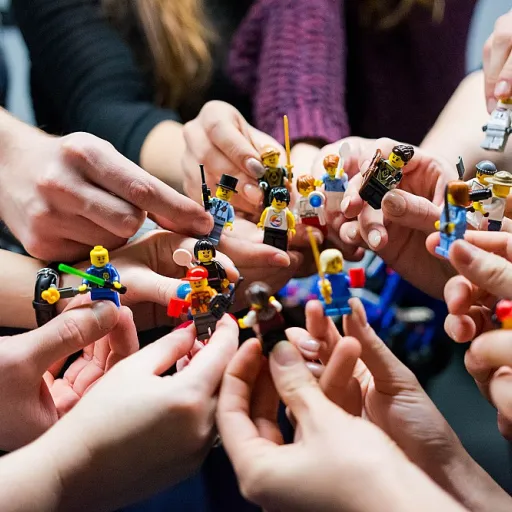
Understanding the basics of the kolb experiential learning cycle
The Foundation of Experiential Learning
Continuous learning thrives on active participation and reflection. The Kolb experiential learning cycle is a widely recognized method in higher education and professional development for structuring this process. It emphasizes learning as a dynamic, cyclical journey, not a linear path. This approach is especially relevant in educational settings where students and professionals alike benefit from hands-on experience and reflective practice.
Four Key Steps in the Kolb Cycle
The Kolb experiential learning cycle consists of four interconnected stages. Each step supports deeper understanding and skill development:
- Concrete Experience: Learners engage directly with a task or activity, such as building with lego bricks or participating in a group exercise.
- Reflective Observation: After the experience, individuals or groups reflect on what happened, often using a journal or group discussion to share perspectives.
- Abstract Conceptualization: Learners connect their experience to theories or concepts, building new mental models and understanding.
- Active Experimentation: The cycle continues as learners apply their new insights to future situations, testing and refining their approach.
Why This Cycle Matters in Learning Environments
Kolb’s cycle is not just a theory; it’s a practical method for fostering creative thinking, problem solving, and leadership. In andragogical practices, especially with adults, this process encourages ownership of learning and supports mental health by making learning meaningful and social. The cycle’s adaptability means it can be integrated into various educational settings, from traditional classrooms to innovative play lsp workshops.
Enhancing the Cycle with Play and Practice
Integrating play, such as the lego serious play method, into the Kolb cycle can transform the learning process. It makes abstract concepts tangible and supports shared understanding within groups. The lsp methodology, which you’ll read more about in the next sections, leverages the power of building lego models to deepen experiential learning and engagement. For those interested in practical applications and digital tools that support continuous learning, exploring platforms like ignite training login for continuous learning can further enhance your educational journey.
What is lego serious play and how does it work?
Exploring the LEGO Serious Play Method
The LEGO Serious Play (LSP) method is a facilitated process that uses LEGO bricks as a tool for creative thinking, problem solving, and group reflection. Unlike traditional learning approaches, LSP encourages participants to build physical models that represent their ideas, experiences, and understanding. This hands-on, experiential learning technique is gaining traction in higher education, leadership development, and various educational settings due to its ability to foster active participation and deeper engagement.
At its core, the LSP process is grounded in the belief that play is a powerful driver for learning and social interaction. By engaging with LEGO bricks, students and professionals alike can externalize their thoughts, making abstract concepts tangible. This method supports reflective practice and helps groups share perspectives in a safe, inclusive environment. The act of building LEGO models enables participants to express complex ideas, facilitating a richer understanding of course content and group dynamics.
- Experience through play: LSP transforms learning environments by making the process interactive and enjoyable. The playful aspect reduces barriers, encouraging open communication and creative risk-taking.
- Shared understanding: By building and discussing models, groups develop a collective understanding of challenges and opportunities, which is crucial for effective leadership and collaborative problem solving.
- Structured process: The LSP methodology follows a series of steps, including posing a question, building a model, sharing the story, and reflecting as a group. This structure aligns well with experiential learning cycles, supporting both individual and group reflection.
In practice, the LEGO Serious Play method has been applied to a range of topics, from mental health awareness to leadership training and andragogical practices. Its versatility makes it suitable for both students and professionals seeking to enhance their learning experience. The method not only supports the development of critical thinking skills but also strengthens social connections within groups.
For those interested in the practical aspects of implementing LSP in training or educational settings, resources such as effective training guides can provide further insights into optimizing the learning process.
Connecting lego serious play to experiential learning
Bridging Play and Experience in Learning
When we look at the Kolb experiential learning cycle, it’s clear that learning is not just about absorbing information. It’s about engaging in a process—doing, reflecting, conceptualizing, and applying. The Lego Serious Play (LSP) method fits naturally into this cycle, offering a hands-on, social, and reflective approach to learning that resonates in both higher education and professional settings.
LSP uses the act of building with Lego bricks to help students and groups externalize their thoughts and experiences. This physical process of construction becomes a shared language, making abstract concepts more concrete. As participants build, they move through the Kolb cycle’s steps:
- Concrete Experience: Learners engage directly with Lego bricks, creating models that represent their ideas or challenges.
- Reflective Observation: After building, participants discuss and journal about their creations, deepening their understanding through group reflection.
- Abstract Conceptualization: Insights from the building and sharing process help learners connect their experiences to theoretical concepts, course content, or leadership practices.
- Active Experimentation: Learners apply new understanding by adapting their models or strategies, practicing problem solving in a safe, playful environment.
This method is not just about play—it’s a serious approach to experiential learning that supports creative thinking, mental health, and reflective practice. In educational settings, LSP encourages active participation, making learning environments more inclusive and dynamic. The group process also fosters social learning, where shared experiences lead to deeper understanding and improved andragogical practices.
For those interested in how accountability and reflection enhance continuous learning, exploring the ladder of accountability in continuous learning offers further insights into building effective learning processes.
Benefits of using lego serious play in continuous learning
Unlocking Deeper Engagement and Understanding
Lego Serious Play (LSP) brings a unique dimension to continuous learning by making the process hands-on and interactive. When students or professionals use lego bricks to build models, they are not just playing—they are actively engaging with course content and concepts. This tactile approach helps learners move beyond passive listening, encouraging them to participate in every step of the learning process.Enhancing Reflective Practice and Shared Experience
The LSP method supports reflective practice by prompting participants to explain their models and the thinking behind them. This sharing creates a social and collaborative environment where group members learn from each other's perspectives. In higher education and other educational settings, this shared experience deepens understanding and helps learners connect theory to real-world practice.Boosting Creative Thinking and Problem Solving
Lego Serious Play encourages creative thinking by allowing learners to experiment with ideas in a safe, playful space. The act of building with lego bricks stimulates the mind, making it easier to approach complex problems from new angles. This method is especially effective for leadership development, as it fosters open communication and collaborative problem solving within groups.Supporting Mental Health and Well-being
The playful nature of the LSP process can reduce stress and anxiety, making learning more enjoyable and accessible. Engaging in play lsp activities helps participants relax, which can improve focus and overall mental health. This benefit is particularly valuable in demanding learning environments or when tackling challenging topics.Adapting to Diverse Andragogical Practices
LSP methodology is flexible and can be tailored to various educational settings, from traditional classrooms to corporate training sessions. Its experiential learning approach aligns well with andragogical practices, supporting adult learners in building practical skills through direct experience and reflection. By integrating LSP into the learning process, educators and trainers can create more dynamic and effective learning environments.Practical examples of lego serious play with the kolb cycle
Real-World Scenarios Using LEGO Serious Play and the Kolb Cycle
In educational settings and professional development, the combination of LEGO Serious Play (LSP) and the Kolb experiential learning cycle has shown practical results. Here are some concrete examples of how this method supports learning, creative thinking, and reflective practice:- Leadership Development Workshops: In higher education and corporate training, groups use LEGO bricks to build models representing leadership challenges. Participants move through the Kolb cycle by first experiencing the challenge (Concrete Experience), reflecting on their models and group discussions (Reflective Observation), analyzing what effective leadership looks like (Abstract Conceptualization), and finally applying new strategies in role-play or real-life scenarios (Active Experimentation). This process enhances understanding and practice of leadership skills.
- Problem Solving in Student Groups: In classroom environments, students are tasked with building LEGO models that represent solutions to social or academic problems. The hands-on play method encourages engagement and shared experience. After building, students journal about their process, discuss insights with peers, and brainstorm ways to apply their solutions to future projects, following the steps of the experiential learning cycle.
- Mental Health and Wellbeing Sessions: Some educational institutions use LSP methodology to help students express emotions and experiences related to mental health. Building LEGO models provides a safe, creative outlet. The group then reflects on the meaning behind each model, supporting social connection and deeper understanding. This reflective practice is a key part of the Kolb cycle, helping participants process and learn from their experiences.
- Course Content Exploration: In andragogical practices, instructors use LSP to help adult learners engage with complex topics. Learners build representations of course content, discuss their models, and connect abstract concepts to real-world applications. This approach supports experiential learning and helps solidify knowledge through active participation.
How LSP Supports Different Learning Environments
The LSP process adapts well to various educational and training contexts. Whether in group workshops, individual reflective practice, or online learning environments, the method encourages active participation and shared understanding. By integrating building LEGO into the learning process, educators and facilitators can:- Promote creative thinking and problem solving
- Enhance social interaction and group cohesion
- Support reflective practice through journaling and discussion
- Make abstract concepts tangible and memorable
Tips for integrating lego serious play into your learning process
Start Small and Build Confidence
If you are new to the lego serious play method, begin with short, focused sessions. Use simple prompts that encourage students or participants to share their experience and understanding. This helps everyone get comfortable with the lsp process and the tactile nature of building lego models to express ideas.Align Activities with Learning Objectives
Make sure each lsp activity connects directly to your course content or learning goals. For example, if you are teaching problem solving or creative thinking, design challenges that require students to build lego models representing solutions or new concepts. This ensures the play method supports meaningful experiential learning and reflective practice.Encourage Reflective Practice
After each building session, allocate time for group discussion and journaling. Ask participants to reflect on what their lego bricks model represents and how it relates to their own learning process. This step deepens understanding and links the hands-on experience to the kolb experiential learning cycle.Foster a Safe and Inclusive Environment
Create a social and supportive atmosphere where everyone feels comfortable sharing their models and ideas. In educational settings or higher education, emphasize that there are no right or wrong answers in serious play. This openness encourages participation and supports mental health by reducing performance anxiety.Integrate LSP into Existing Andragogical Practices
Blend lsp methodology with your current teaching or leadership strategies. For example, use lego serious play during group work, leadership development, or when introducing new course content. This integration helps make experiential learning a regular part of your learning environments.Document and Share Outcomes
Capture photos of the lego models and summarize key insights from each session. Sharing these outcomes with the group reinforces shared understanding and helps track progress over time. Encourage students to keep a journal of their lsp experience to support ongoing learning and reflective practice.Adapt for Different Groups and Contexts
Adjust the complexity of the lsp process based on the age, background, and needs of your group. In higher education, you might use more complex scenarios, while in other educational settings, simpler prompts may be more effective. The flexibility of the lego serious play method makes it suitable for a wide range of learning environments and group sizes.- Start with clear instructions and a defined process
- Encourage open dialogue and shared reflection
- Use building lego as a tool for both individual and group exploration
- Regularly revisit and adapt your approach based on feedback












